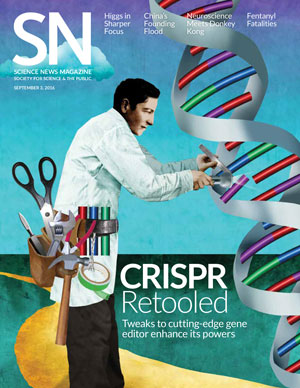Readers question the biology of alcoholism and more
Your letters and comments on the September 3, 2016, issue of Science News
- More than 2 years ago
 Gene and tonic
Gene and tonic
Lab rats bred to drink a lot or hardly at all have revealed 930 genes linked to a preference for alcohol, a recent study shows. Tina Hesman Saey reported the findings in “Rats offer DNA clues to alcoholism” (SN: 9/3/16, p. 8).
John M. Wozniak Jr. wondered if the drinking rats were truly alcoholic, or if they gained nutritional or energy benefits from the alcohol.
The rats show the same clinical signs of alcohol withdrawal as humans, suggesting physical dependence, says study coauthor William Muir of Purdue University. “If the rats were just using the alcohol as an energy source and had no other effects, those withdrawal behaviors would be absent,” he says.
Vision quest
Women who receive cornea transplants are more likely to reject them if the donors are male, freelance writer Amber Dance reported in “A view to better cornea transplants” (SN: 9/3/16, p. 4).
“Can tissue transplant[s] be modified somehow to cause less reactions?” asked online reader WendyVerdades.
Treatments that suppress the immune system’s response to the foreign corneas, such as steroid eye drops, can help prevent or reverse rejection, Dance says.
However, scientists are working on a host of experimental treatments that don’t require donor corneas to overcome the rejection problem. Approaches include growing new corneas from stem cells (SN Online: 3/9/16) and creating synthetic corneas using cornea cells and hydrogel.
Correction
The DNA helix illustrated on the September 3, 2016 cover of Science News twists left, a formation known as Z-DNA. What the illustration should have shown was B-DNA, which twists right. It is the form of DNA most abundant in living cells and the one researchers edit with CRISPR/Cas9.






